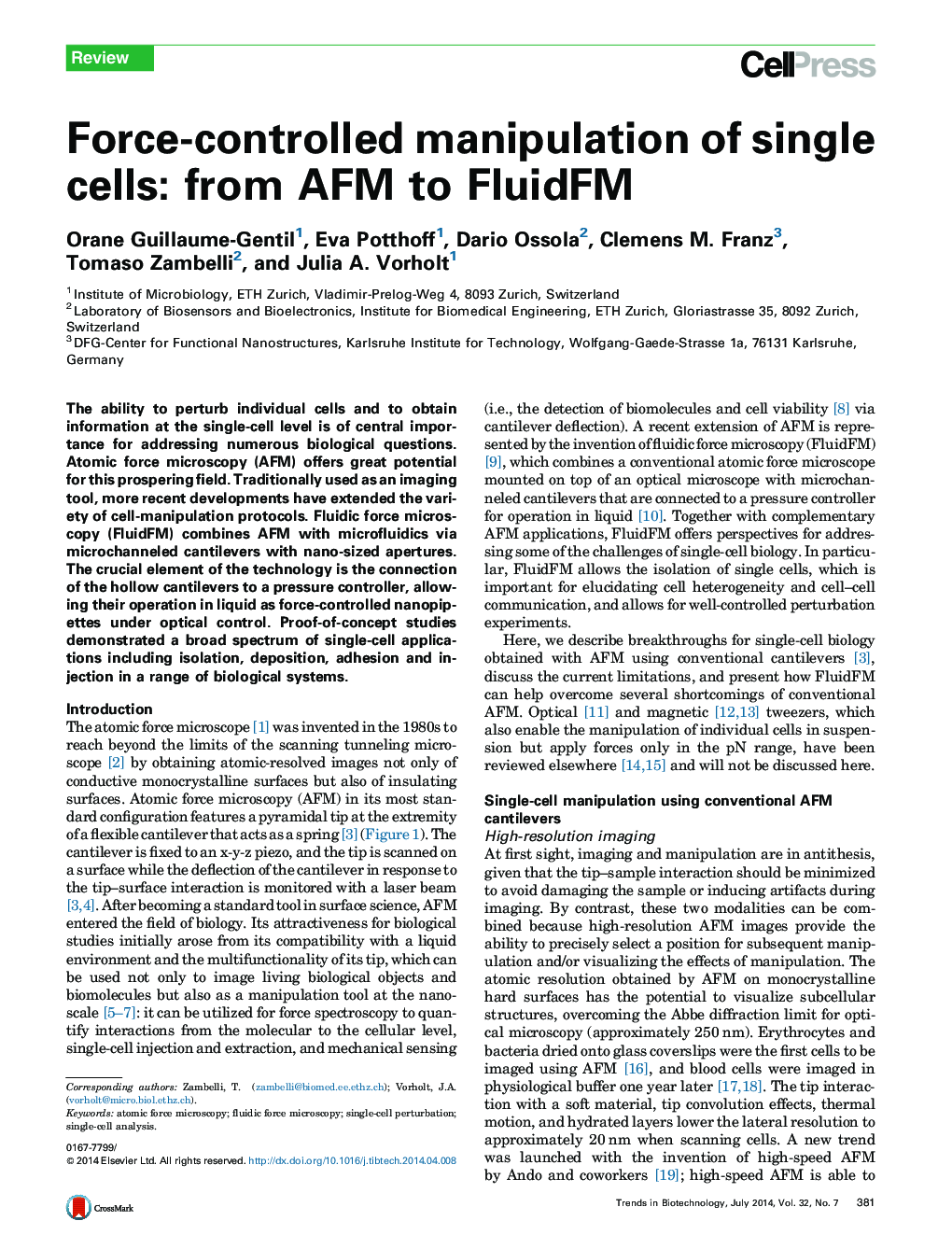| Article ID | Journal | Published Year | Pages | File Type |
|---|---|---|---|---|
| 37052 | Trends in Biotechnology | 2014 | 8 Pages |
•FluidFM combines AFM with microfluidics and represents a force-controlled nanopipette.•FluidFM allows multiple means to perturb, isolate, and analyze single cells.•Operation modes can be combined to perform sequential manipulations on a single cell.
The ability to perturb individual cells and to obtain information at the single-cell level is of central importance for addressing numerous biological questions. Atomic force microscopy (AFM) offers great potential for this prospering field. Traditionally used as an imaging tool, more recent developments have extended the variety of cell-manipulation protocols. Fluidic force microscopy (FluidFM) combines AFM with microfluidics via microchanneled cantilevers with nano-sized apertures. The crucial element of the technology is the connection of the hollow cantilevers to a pressure controller, allowing their operation in liquid as force-controlled nanopipettes under optical control. Proof-of-concept studies demonstrated a broad spectrum of single-cell applications including isolation, deposition, adhesion and injection in a range of biological systems.
